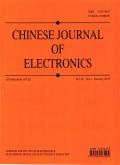Asynchronous Consensus Algorithm Integrating Dynamic Weight Sharding Strategy
IF 3
4区 计算机科学
Q3 ENGINEERING, ELECTRICAL & ELECTRONIC
引用次数: 0
Abstract
Blockchain technology has broad application prospects in many fields due to its unique characteristics such as decentralization, traceability, and tamper-proofing, and has become a research hotspot in recent years. As a key component of blockchain technology, the consensus algorithm is one of the important factors affecting blockchain performance. Many consensus algorithms currently used in consortium chains are based on timing assumptions and lack horizontal scalability. That is to say, these algorithms cannot reach an agreement in an asynchronous network where the receiving time of network packets is uncertain, and their efficiency decreases as the number of nodes increases, which hinders the large-scale application of the consortium chain. In order to solve the above problems, this paper proposes the dynamic sharding Dumbo (DS-Dumbo) algorithm, an asynchronous consensus algorithm that integrates dynamic sharding strategies, based on the currently excellent Dumbo Byzantine fault tolerance (DumboBFT) asynchronous consensus algorithm. The main work of this paper revolves around how to fragment and optimize the consensus process. This paper designs a node asynchronous sharding model based on multi-dimensional weights, so that the re-sharding work of each blockchain node can be executed concurrently with the asynchronous consensus algorithm, reducing the conflict between blockchain sharding and asynchronous consensus algorithms. We also designed an intelligent transaction placement strategy, which calculates the relevance score of each transaction for all shards to determine which shard the transaction is processed in order to reduce the number of complex cross-shard transactions. We optimized the execution process of the DumboBFT algorithm, converted its internal synchronous working mode to an asynchronous working mode, and reduced the consumption of consensus work to a certain extent. The experimental evaluation shows that the DS-Dumbo algorithm has higher throughput and lower delay than the DumboBFT algorithm, can increase the throughput with the increase of nodes, and has the ability of horizontal expansion.集成动态权重分片策略的异步一致性算法
区块链技术以其独特的去中心化、可追溯性、防篡改等特点,在诸多领域有着广阔的应用前景,成为近年来的研究热点。共识算法作为区块链技术的关键组成部分,是影响区块链性能的重要因素之一。目前在联盟链中使用的许多共识算法都是基于时间假设的,缺乏横向可扩展性。也就是说,这些算法在网络数据包接收时间不确定的异步网络中无法达成一致,且效率随着节点数量的增加而降低,阻碍了联盟链的大规模应用。为了解决上述问题,本文在目前优秀的Dumbo拜占庭容错(DumboBFT)异步共识算法的基础上,提出了一种集成了动态分片策略的异步共识算法——动态分片Dumbo (DS-Dumbo)算法。本文的主要工作围绕如何分割和优化共识过程展开。本文设计了一种基于多维权值的节点异步分片模型,使得区块链节点的重分片工作可以与异步共识算法并行执行,减少了区块链分片与异步共识算法之间的冲突。我们还设计了一个智能事务放置策略,该策略计算所有分片的每个事务的相关性评分,以确定处理哪个分片的事务,以减少复杂的跨分片事务的数量。我们优化了DumboBFT算法的执行过程,将其内部的同步工作模式转换为异步工作模式,在一定程度上减少了共识工作的消耗。实验评估表明,DS-Dumbo算法比DumboBFT算法具有更高的吞吐量和更低的延迟,可以随着节点的增加而增加吞吐量,并具有水平扩展的能力。
本文章由计算机程序翻译,如有差异,请以英文原文为准。
求助全文
约1分钟内获得全文
求助全文
来源期刊

Chinese Journal of Electronics
工程技术-工程:电子与电气
CiteScore
3.70
自引率
16.70%
发文量
342
审稿时长
12.0 months
期刊介绍:
CJE focuses on the emerging fields of electronics, publishing innovative and transformative research papers. Most of the papers published in CJE are from universities and research institutes, presenting their innovative research results. Both theoretical and practical contributions are encouraged, and original research papers reporting novel solutions to the hot topics in electronics are strongly recommended.
 求助内容:
求助内容: 应助结果提醒方式:
应助结果提醒方式:


